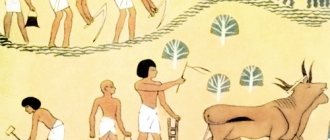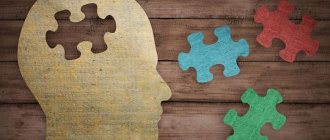Updated July 22, 2022 287 Author: Dmitry Petrov
Hello, dear readers of the KtoNaNovenkogo.ru blog. Genetics is a young science, but it has revolutionized our understanding of evolutionary processes.
One of the main concepts is genotype, phenotype, genome and gene pool. All these concepts are interconnected, so today we will talk about it in a comprehensive manner.
However, the emphasis will be on the genotype - what it is and how it relates to other fundamental postulates of genetics. It will be interesting, don’t switch...
The relationship between phenotype and genotype
The genotype of an organism determines its phenotype. All living organisms have DNA, which provides instructions for the production of molecules, cells, tissues and organs. DNA contains the genetic code, which is also responsible for directing all cellular functions, including mitosis, DNA replication, protein synthesis, and molecular transport.
An organism's phenotype (physical traits and behavior) is determined by its inherited genes. Genes are specific sections of DNA that encode the structure of proteins and determine various characteristics. Each gene is located on a chromosome and can exist in more than one form. These different forms are called alleles, which are located in specific locations on specific chromosomes. Alleles are passed from parents to offspring through sexual reproduction.
Diploid organisms inherit two alleles for each gene; one allele from each parent. The interactions between alleles determine the phenotype of an organism. If an organism inherits two identical alleles for a particular trait, it is homozygous for that trait. Homozygous individuals express one phenotype for a given trait. If an organism inherits two different alleles for a particular trait, it is heterozygous for that trait. Heterozygous individuals can express more than one phenotype for a given trait.
Complete, incomplete and co-dominance
Traits can be dominant or recessive. In complete dominance inheritance patterns, the phenotype of the dominant trait completely masks the phenotype of the recessive trait. There are also cases where the relationship between different alleles does not show complete dominance. In incomplete dominance, the dominant allele does not completely mask the other allele. This results in a phenotype that is a mixture of the phenotypes observed in both alleles. With codominance, both alleles are fully expressed. This results in a phenotype in which both traits are observed independently of each other.
| Type of dominance | Trait | Alleles | Genotype | Phenotype |
| Complete Domination | Color | R-red, r-white | Rr | Red color |
| Incomplete dominance | Color | R-red, r-white | Rr | pink color |
| Codominance | Color | R-red, r-white | Rr | red and white color |
Recording genotypes
Genotypes are studied by coding genes (for example, the gene for blond hair is written “A”, and the gene for dark hair “a”). This designation in large and small letters shows which gene is dominant and which is recessive.
Following this principle it is possible:
- Dominant homozygotes (AA blonde);
- Heterozygous (Aa blonde);
- Recessive homozygotes (aa dark-haired).
The interaction of genes is studied using the same principle. They just take several pairs of genes, which is where terms like 2,3,4,5 genotype come from. If you take three pairs of genes, the entry may look like AABbCc; if you take five pairs of genes, then two more designations will be added to the entry. Each gene is responsible for its own trait: blue or green eyes, the presence or absence of protein.
How can environment interact with genotype during development?
It is clear that the result of development - the phenotype - depends on the joint action of genes and the environment. Genes and traits are linked through a complex network of developmental pathways. All individual differences that differential psychologists and psychogeneticists are concerned with are the result of the developmental circumstances of specific individuals in specific environments. Often individuals brought up in apparently different environments have much in common. Conversely, siblings raised in the same family, seemingly under similar circumstances, due to subtle differences in the conditions of upbringing and development, will actually experience very different influences from both the physical and social environment.
Thus, the process of interaction with the environment is complex and ambiguous. Note also that psychologists and other researchers often use the term “interaction” in a statistical sense when examining the interaction of individual factors in the production of any measurable effect. Let us emphasize that the statistical interaction of factors and the interaction of genes and environment in individual development are completely different things. They should not be confused.
For us, the formulation is quite familiar, which states that the manifestation of a phenotype is the result of the interaction of the genotype with the environment during development. However, if you think about this statement, it does not seem so obvious. After all, interaction presupposes that its participants come into contact and come into contact. In fact, our genotype, that is, the genetic apparatus, is hidden deep inside the cell and is separated from the external environment not only by the integument of the body, but also by the cellular and nuclear membranes. How can the external environment interact with genetic structures?
It is clear that genes and the surrounding world are not in direct contact. The organism as a whole interacts with the external environment; genes interact with various biochemical substances inside the cell. But various cellular substances can be influenced by the outside world. Let's consider what is known about these processes today's science. To do this, we will again have to turn to molecular genetics and consider in more detail how genes function, since in the previous presentation we only stated that the main function of a gene is to encode the information necessary for the synthesis of a specific protein.
Extended Phenotype
Typically, the physical manifestation of genes is considered to be the characteristics of an organism. But Richard Dawkins, author of The Selfish Gene, believes that the concept of phenotype should also include features of the species' habitat. In his 1982 paper, The Extended Phenotype, Dawkins argued that since a bird's ability to build a nest or a beaver's ability to build a lodge are determined by genes (affecting, for example, agility and coordination) and are directly related to the individual's individual fitness, natural selection can act on these "signs". A beaver that builds huts better has a better chance of surviving and leaving offspring. The phenotype may even include other organisms—for example, genes that allow the parasite to control the behavior of the host clearly provide a selective advantage. Like the “gene-centric” view of evolution, the concept of the extended phenotype is not so much a theory as it is a way of looking at things from a particular perspective. Although Dawkins is primarily known as a popularizer of the work of other scientists, the concept of the extended phenotype was his personal contribution to the development of science.
Richard Dawkins
Share link
What is GENOTYPE and PHENOTYPE - definition in simple words.
In simple words, Genotype is internally encoded heritable information that is carried by all living things. This is a kind of master plan or set of instructions for building a new organism, which indicates all the parameters of how this organism will look and function. These instructions are transmitted in encoded form - genetic code. In turn, the genetic code is present in all cells of the body, and it is copied during cell division or reproduction, passing on hereditary information to offspring. The information contained in the genetic code is directly related to all aspects of the life of the cell and the organism as a whole. It is she who controls absolutely all processes, from the formation of protein macromolecules to the regulation of metabolism and cell regeneration.
In simple words, Phenotype is the appearance and behavior of a particular individual. In other words, it is the result of what an organism has become under the influence of the components of the genotype, the ratio of dominant alleles and the environment.
Genetics methods
The main one is the hybridological method - a system of crossings that makes it possible to trace the patterns of inheritance of traits in a number of generations. First developed and used by G. Mendel. Distinctive features of the method: 1) targeted selection of parents who differ in one, two, three, etc. pairs of contrasting (alternative) stable characteristics; 2) strict quantitative accounting of the inheritance of traits in hybrids; 3) individual assessment of the offspring from each parent in a series of generations.
Crossing, in which the inheritance of one pair of alternative characters is analyzed, is called monohybrid , two pairs - dihybrid , several pairs - polyhybrid . Alternative features are understood as different meanings of a feature, for example, the feature is the color of peas, alternative features are the color yellow, the green color of peas.
In addition to the hybridological method, the following are used in genetics: genealogical - compilation and analysis of pedigrees; cytogenetic - study of chromosomes; twin - the study of twins; population statistical method - the study of the genetic structure of populations.
GENOTYPE and PHENOTYPE - how they differ.
Speaking of such two concepts as “genotype” and “phenotype”, first of all it should be noted that they are indeed closely related to each other, but have fundamental differences. The fact is that the term Genotype is applicable specifically to the genetic information contained in the gene code. The genotype can only be determined through biological tests and studies. In turn, the phenotype is the consequences of the genotype and other factors that can simply be seen.
If we talk about the differences quite simply, then:
- The genotype is a code (it cannot just be seen);
- Phenotype is the way the code manifests itself (you can observe: eye color, hair color, height, behavior, etc.).
In conclusion, I would like to note that in fact, the topic of genotypes, phenotypes, their characteristics and influence is a very broad topic that occupies a significant layer in biology. In this article, we only introduced you to what the definitions of genotype and phenotype are in the most accessible and understandable way.
Law of segregation, or Mendel's second law
G. Mendel gave the first generation hybrids the opportunity to self-pollinate. The second generation hybrids obtained in this way showed not only a dominant, but also a recessive trait. The experimental results are shown in the table.
| Signs | Dominant | Recessive | Total | ||
| Number | % | Number | % | ||
| Seed shape | 5474 | 74,74 | 1850 | 25,26 | 7324 |
| Coloring of cotyledons | 6022 | 75,06 | 2001 | 24,94 | 8023 |
| Seed coat color | 705 | 75,90 | 224 | 24,10 | 929 |
| Bob shape | 882 | 74,68 | 299 | 25,32 | 1181 |
| Bob coloring | 428 | 73,79 | 152 | 26,21 | 580 |
| Flower arrangement | 651 | 75,87 | 207 | 24,13 | 858 |
| Stem height | 787 | 73,96 | 277 | 26,04 | 1064 |
| Total: | 14949 | 74,90 | 5010 | 25,10 | 19959 |
Analysis of the table data allowed us to draw the following conclusions:
- There is no uniformity of hybrids in the second generation: some hybrids carry one (dominant), some - another (recessive) trait from an alternative pair;
- the number of hybrids carrying a dominant trait is approximately three times greater than the number of hybrids carrying a recessive trait;
- The recessive trait does not disappear in the first generation hybrids, but is only suppressed and appears in the second hybrid generation.
The phenomenon in which part of the second generation hybrids carries a dominant trait, and part - a recessive one, is called segregation . Moreover, the splitting observed in hybrids is not random, but is subject to certain quantitative patterns. Based on this, Mendel made another conclusion: when crossing hybrids of the first generation, the characteristics in the offspring are split in a certain numerical ratio.
In a monohybrid crossing of heterozygous individuals, the hybrids have a 3:1 phenotypic split and a 1:2:1 genotype split.
Genetic diagram of Mendel's law of segregation
(A is the yellow color of peas, and is the green color of peas):
| P | ♀Aa yellow | × | ♂Aa yellow | ||
| Types of gametes | A | a | A | a | |
| F2 | AA yellow | Aa yellow 75% | Aa yellow | aa green 25% | |
What is genotype
This is the totality of hereditary information in the body. In other words, it is the sum of genes that forms a single system.
Unlike the gene pool, it describes not the entire species, but an individual.
How to determine genotype
To determine the genotype of animals and plants, analytical crossbreeding is used. It is based on crossing an indeterminate individual and an individual with a homozygous (identical) set of chromosomes.
Since the second individual produces one gamete of a recessive trait, identifying the first individual is easy and simple.
But a person, in order to find out his set of genes, needs to be tested in a special laboratory.
How the genotype changes
A change in the set of genes can be caused by a mutation. During this process, the structure of DNA changes, which can be inherited. Mutations occur for various reasons.
For example, due to ultraviolet rays, radiation or exposure to chemicals.
Mutations are divided into:
- genetic;
- chromosomal;
- genomic;
- somatic;
- cytoplasmic.
Gene mutations imply a change in the structure of one gene, chromosomal mutations mean a modification of the structure of a chromosome, genomic mutations mean changes in the number of chromosomes.
Mutations can also be spontaneous or artificial. The first occur spontaneously and occur throughout life. The latter are artificially caused in the laboratory.
Mutations are mostly lethal or neutral. Occasionally, mutations are beneficial to the body.
The set of genes can also change due to combinative variability. It is based on the recombination of genes during the sexual process.
As a result of what process is the genotype of the offspring formed?
It is formed as a result of the fusion of parent gametes. For example, when two homozygous organisms merge, the offspring will receive the genotype “aa”.
Genotype is...
In short, a genotype is the totality of genes of a particular organism. Sometimes the term “genotype” is used to designate a separate gene or group of genes.
The concept of “genotype” entered science at the beginning of the twentieth century at the suggestion of the Danish biologist, Professor V. Johansen. But before talking about the genotype, it would be logical to define its basis - the gene.
In classical genetics, a gene is a complex molecular system that contains certain information about a number of the most important functions of the body and acts as a structural unit of heredity.
With the development of natural sciences, especially after the discovery of DNA as a carrier of genetic information, the concept of “gene” gradually expanded, but never received a universal definition in the scientific world.
Nevertheless, geneticists agree that a gene is a section of a DNA molecule that contains information about the sequence of amino acids in a particular protein (i.e., about its primary structure).
A genotype is not just a sum of independent genes, independent of each other, but a very complex integral system - a genetic environment where the work of an individual gene is influenced by other genes.
The genotype, which carries a set of genetic information, controls the structure, vital activity and development of the organism.
At the same time, individuals with the same genotype in different environments, as a rule, differ from each other in characteristic features, that is, in phenotype , which will be discussed below.
The genotype of animals and plants is formed as a result of the fusion of male and female gametes. It is determined using analytical crossing, which is based on crossing an individual with an unknown set of genes with an individual homozygous for a recessive gene (it serves as an “analyzer”).
In other words, analyzing crossing allows one to determine the genotype of one of the parents from the phenotypes of the offspring.
- If, as a result of such a crossing, all the offspring turn out to be homogeneous, then the analyzed individual is homozygous (with an identical set of gametes).
- If splitting occurs, then the analyzed individual is heterozygous (with different types of gametes).
The genotype is a stable structure, but can change as a result of mutation , during which the DNA structure is disrupted. The cause of mutation can be natural or artificial factors, such as radiation, ultraviolet irradiation, exposure to chemicals, etc.
Accidents of development
The variability of developmental phenomena depends on many reasons. Heredity tends to reduce developmental variability, whereas conditions not associated with heredity tend to increase it. Some developmental researchers identify four types of random factors that influence developmental variability:
- accidents in the selection of parental pairs, the genes of which make up the genotype of the individual;
- randomness of epigenetic (that is, external to the genotype) processes within individual ontogenesis;
- the randomness of the maternal environment in which the individual develops;
- the randomness of the non-maternal environment in which the individual develops.
Although these are random events, they all have an element of heredity. The genotype is inherited from the parents, and the offspring and parents have common genes that influence the course of individual development. Epigenetic processes within the body represent the influence of other cells or their products on the activity of the genotype of a given cell. Since all cells in the body have the same genotype, it is natural that epigenetic influences are associated with heredity. However, epigenetic processes are stochastic, open to the influence of environmental factors of the organism and, therefore, to any historical accidents.
The maternal environment of mammals is a very important element of the external environment. Mothers provide the intrauterine and postnatal (baby care and education) environment for the child. It is clear that these conditions are influenced by the mother's genotype. Partially, the mother's genes are shared with the offspring, so the maternal environment can be inherited. The maternal environment is also sensitive to historical contingencies.
Nonmaternal environmental effects also influence developmental variability. This includes factors that are chosen by the individual himself or shaped by the people around him, including relatives with whom he shares genes. Therefore, these environmental effects, to some extent, are also influenced not only by random environmental events, but also by genes, and are also inherited (genotype-environmental covariation).
Thus, in accordance with the above classification, in all the described elements of the environment external to a given individual, there are mechanisms for inheritance, both genetic and non-genetic (various traditions, etc.).
Naturally, non-heritable factors also influence development. These are those features of the environment that are not associated with changes caused by the developing individual himself or his related environment. They can be either random or natural. Regular changes include cyclical changes (change of day and night, change of seasons, etc.), widespread influences (gravity) or predictable factors (temperature, pressure). Non-heritable factors are also present in the maternal and other social environment (quality of maternal nutrition, maternal stress level, number and gender of siblings, etc.). Randomly or systematically changing environmental events contribute to variability in development.
All events external to genes that take place during the process of ontogenesis, together with genetic factors, create the background against which development takes place. Due to the impact of a huge variety of regular and random events in ontogenesis, developing systems can organize and reorganize. Genes make development possible, but other components that influence the development of the system are no less important participants in the development process.
At the beginning of the presentation, defining the concept of phenotype, we emphasized that the phenotype is the result of the interaction of the genotype and the environment, however, in the light of what has been said about the process of individual development, we must make some clarification in this formulation and, along with environmental factors, mention accidents of development that cannot be reduced to purely environmental influences. If we tried to graphically depict the dependence of the phenotype on various factors, then we would need at least a four-dimensional space in which, in addition to the axes for genotype and environment, there would also have to be an axis for the accidents of development.
Recommendations
- "phenotype adjective - definition, pictures, pronunciation and usage notes." Oxford Advanced Learner's Dictionary at OxfordLearnersDictionaries.com
. Retrieved 2020-04-29. a set of observable characteristics of an individual resulting from the interaction of his genotype with the environment. - "Genotype vs. Phenotype." Understanding Evolution
. Retrieved 2020-04-29. An organism's genotype is the set of genes it carries. An organism's phenotype is all of its observable characteristics that are influenced by both its genotype and its environment. - ^ a b
Dawkins, Richard (12 January 1978).
"Replicator selection and extended phenotype". Ethology
.
47
(January 1–December 1978): 61–76. Doi:10.1111/j.1439-0310.1978.tb01823.x. PMID 696023. - Churchill, F. (1974). "William Johannsen and the concept of genotype". Journal of the History of Biology
.
7
(1): 5–30. Doi:10.1007/BF00179291. PMID 11610096. S2CID 38649212. - Johannsen, W. (1911). "The genotypic concept of heredity." American naturalist
.
45
(531): 129–159. Doi:10.1086/279202. JSTOR 2455747. PMC 4258772. - Crusio, Wim E. (May 2002). “My mouse has no phenotype.” Genes, Brain and Behavior
.
1
(2): 71. doi:10.1034/j.1601-183X.2002.10201.x. PMID 12884976. S2CID 35382304. - Cassidy, Suzanne B.; Morris, Colleen A. (01/01/2002). "Behavioral phenotypes in genetic syndromes: genetic clues to human behavior." Advances in Pediatrics
.
49
: 59–86. PMID 12214780. - O'Brien, Gregory; Yule, William, ed. (1995). Behavioral phenotype
. Developmental Medicine Clinic No. 138. London: Mac Keith Press. ISBN 978-1-898683-06-3. - O'Brien, Gregory, ed. (2002). Behavioral phenotypes in clinical practice
. London: Mac Keith Press. ISBN 978-1-898683-27-8. Retrieved September 27, 2010. - Lewontin, R.S. (November 1970). "Selection Units" (PDF). Annual Review of Ecology and Systematics
.
1
: 1–18. Doi:10.1146/annurev.es.01.110170.000245. JSTOR 2096764. - “Botany Online: Evolution: Modern Synthesis - Phenotypic and Genetic Variation; ecotypes." Archived from the original on 2009-06-18. Retrieved 2009-12-29.
- Dawkins, Richard (1982). Extended phenotype
. Oxford University. n.. ISBN 978-0-19-288051-2. - Hunter, Philip (2009). “Extended reduction phenotype. How far can genes extend when manipulating an organism's environment? EMBO reports
.
10
(3): 212–215. doi:10.1038/embor.2009.18. PMC 2658563. PMID 19255576. - Maner, M., & Carey, M. (1997). “What are genomes, genotypes and phenotypes? What about phenomena?" Journal of Theoretical Biology
.
186
(1):55–63. doi:10.1006/jtbi.1996.0335. PMID 9176637. - Varkey, A; Wills, C; Perlmutter, D; Woodruff, D; Gage, F; Moore, J; Semendeferi, K; Bernirschke, K; Katzman, R; and others. (1998). "Great Ape Phenome Project?" The science
.
282
(5387): 239–240. Bibcode:1998Scientific ... 282..239B. Doi:10.1126/science.282.5387.239d. PMID 9841385. S2CID 5837659. - Houle, David; Govindaraju, Diddahally R.; Ömholt, Stig (December 2010). "Phenomics: the next challenge." Nature Reviews Genetics
.
11
(12): 855–866. Doi:10.1038/nrg2897. PMID 21085204. S2CID 14752610. - Framer, Nelson; Sabatti, Chiara (May 2003). "The Human Phenomenon Project." Nature Genetics
.
34
(1): 15–21. Doi:10.1038/ng0503-15. PMID 12721547. S2CID 31510391. - Rahman, Hifzur; Ramanathan, Valarmati; Jagadeeshselvam, N.; Ramasamy, Shashikala; Rajendran, Satishraj; Ramachandran, Mahendran; Sudhir, Pamidimarri D.V.N.; Chauhan, Sushma; Natesan, Senthil (01/01/2015). Barkh, Debmalya; Khan, Muhammad Sarwar; Davis, Eric (ed.). PlantOmics: Omics of Plant Science
. Springer India. pp. 385–411. Doi:10.1007/978-81-322-2172-2_13. ISBN 9788132221715. - Fairbank, Robert T.; Tester, Mark (12/01/2011). “Phenomics—technologies for eliminating phenotyping bottlenecks.” Trends in crop production
.
16
(12): 635–644. doi:10.1016/j.tplants.2011.09.005. PMID 22074787. - Monte, Andrew A.; Broker, Chad; Nebert, Daniel W.; Gonzalez, Frank J.; Thompson, David S.; Vasiliou, Vasilis (12/01/2014). "Improved drug therapies: triangulating phenomena with genomics and metabolomics." Human Genomics
.
8
(1): 16. doi:10.1186/s40246-014-0016-9. PMC 4445687. PMID 25181945.
Genotype, genome and gene pool
The term “genome” was proposed by the German biologist G. Winkler 10 years later than the concept of “genotype” was formulated.
Genome also refers to a collection of genes, but unlike a genotype, a gene is considered as a nucleotide sequence of DNA in haploid cells (with a single set of chromosomes), and not as an allele (an alternative form of the same gene) in a diploid set of chromosomes.
In order not to get lost in the jungle of genetics, it is important to understand the main thing:
The genome, being the hereditary material of an organism, is stored in several (sometimes in one) chromosomes, the number of which is unique for a particular species.
The genome size (based on the number of genes it contains) varies widely, reaching several tens of thousands of units. The fewest genomes were found in the simplest viruses (several hundred), the largest number were found in representatives of the plant world (for example, there are more than 46,000 of them in rice).
According to recent studies, the human genome consists of 46 chromosomes (23 pairs), which contain about 22-25 thousand genes.
Individuals from different populations can interbreed and produce offspring. The gene pool of a species is made up of the gene pool of populations.
The characteristic features of the gene pool include the following distinctive qualities:
- Under constant environmental conditions, the gene pool remains unchanged.
- When external conditions change, individuals whose genes possess traits useful for survival gain an advantage. It is these individuals that will pass on the most valuable qualities to their offspring during sexual reproduction.
- The genes responsible for the most “advantageous” traits accumulate from generation to generation, creating the basis for changes in the gene pool.
- The variability of the gene pool as a mechanism of natural selection is directional and helps to improve the adaptive functions of the body.
The evolutionary changes occurring in the population can be traced in the following examples. In harsh climatic conditions (extreme cold, heat), the proportion of genotypes that increase the thermal insulation of organisms increases.
In other cases, the preservation of a population largely depends on genes encoding the color of the animal (in order to improve camouflage), or the synthesis of protective enzymes (liquids, gases), or behavior patterns, etc.
All this makes the population (or species as a whole) more resistant to the external environment, and therefore ensures its survival.
It happens that some genes (in parents or their descendants) turn out to be damaged (mutated), but this has practically no effect on the genotype, since mutations caused by such genes are unstable and are almost never repeated in inheritance. It follows that the human genome is absolutely stable.
Human phenotypes
Human phenotypes are characteristics inherent to an individual at a given point in time. In other words, it is a set of properties of an organism.
Phenotypic traits
The phenotypic characteristics of a person are height, weight, hair color, eye shade, skin tone, and blood type. Most people have several phenotypes: usually two, but sometimes three or four. Special attention should be paid to genetic diseases. They often have special phenotypic characteristics and manifestations.
The properties of an organism are also divided into quantitative and qualitative. The first express quantity, can be changed and counted. An example of a quantitative characteristic is mass. It changes throughout life, but can be calculated.
Qualitative signs are verbal characteristics. This is, for example, hair color, coat color or seed shade. In general, these are qualities that can be described by definitions.
Quantitative traits, unlike qualitative ones, depend on several genes. At the same time, they are more susceptible to environmental influences.
Alternative signs are two mutually exclusive characteristics of an organism. For example, female and male gender.
What does the phenotype depend on?
The set of properties of an organism depends on a set of genes and environmental conditions.
In what form of variability does only the phenotype change?
Modifying or non-hereditary variability is the transformation of the properties of an organism under the influence of the environment. In other words, this can be called adaptation. In this case, only the phenotype undergoes changes; the set of genes remains unchanged.
In this case, modification variability cannot be transmitted from generation to generation. There is irreversible and reversible non-hereditary variability. An example of the first is the formation of a scar at the site of a scratch. Example of a second tan.
The history of these concepts
What genotype and phenotype are can be understood by learning the history of the origin of these scientific terms. At the beginning of the twentieth century, the science of the structure of a living organism and biology was actively studied. We remember Charles Darwin's theory of evolution and the emergence of man. He was the first to put forward the Temporary hypothesis about the separation of cells in the body (gemmules), from which another individual could subsequently emerge, since these are germ cells. Thus, Darwin developed the theory of pangenesis.
41 years later, in 1909, the botanist Wilhelm Johansen, based on the concept of “genetics” already known in those years (introduced in 1906), introduced a new concept into the terminology of science - “gene”. The scientist replaced with it many words that were used by his colleagues, but which did not reflect the entire essence of the innate properties of a living organism. These are words such as “determinant”, “germ”, “hereditary factor”. During the same period, Johansen introduced the concept of “phenotype,” emphasizing the hereditary factor in the previous scientific term.
Basic concepts of genetics
In addition to these two concepts, the basic concepts of genetics include others:
- Heredity is the transfer of characteristics from one living organism to another;
- Variability is the process of the offspring acquiring distinctive characteristics during individual development;
- Allelic gene – a gene that occupies identical loci in homologous chromosomes;
- Heterozygote is an individual that carries a gene of a different molecular structure;
- Homozygote is an individual that carries a gene with the same molecular structure.
Genotype and phenotype
- The genotype contains encoded hereditary information, represented by the genetic code, which can only be deciphered using biological tests.
- The phenotype is formed in the process of interaction of an individual’s genotype with the external environment and is a way of manifestation of the genetic code. It can be observed visually by such features as hair color (fur), eye color and shape, nose shape, demeanor, etc.
The phenotype has not only external, but also internal characteristics, which include:
- anatomical (structure and relative position of internal organs);
- physiological (cell structure and functioning);
- biochemical (protein structure, composition of hormones and enzymes).
This means that, under certain conditions, different genotypes are capable of creating phenotypes similar to each other, as well as vice versa: the same genotypes can produce a variety of phenotypes.
However, these changes occur within a certain limit, called the “reaction norm”: after all, nothing can appear in the phenotype beyond what is already “recorded” in the genotype.
The reaction rate can be illustrated with this example. The weight of an adult cow of a certain breed, due to genetic characteristics, cannot be more or less than a specific value, regardless of the conditions in which it is kept.
The same goes for milk yield: even with the best care, it will not exceed the maximum level for a given breed. And in response to poor maintenance, the cow may not give milk at all - and this will be logical and fair.
The relationship between genotype and phenotype is clearly visible in identical twins: having an absolutely identical set of genes (genotype), they are practically indistinguishable in the first days of life.
But as we grow older, phenotypic differences begin to appear: facial expression, hair color, behavior, etc.
Types of genotypes
The expression of a gene depends on the genotypic environment. Therefore, in the genotype according to the type of interaction they can be:
- Hypostatic (suppressed by genes of another allelic pair):
- Pleiotropic (affect the manifestation of several signs at once);
- Epistatic (suppress the action of non-allelic genes);
- Sublethal (causes the death of an individual before the start of the reproductive period);
- Lethal (reduce the viability of the embryo even to its death);
- Modifiers (change the expression of other genes);
- Mutators (dramatically change the characteristics of an organism).
The existence of different types of genotypes explains the individual reaction of a person, for example, to medications, and explains the different degrees of development of immunity.
Genotype and phenotype
Genotype and phenotype Genotype is a set of hereditary characteristics and properties received by an individual from its parents. As well as new properties that appeared as a result of gene mutations that the parents did not have. The genotype is formed through the interaction of two genomes (egg and sperm) and represents a hereditary development program, being an integral system, and not a simple sum of individual genes. The integrity of the genotype is the result of evolutionary development, during which all genes were in close interaction with each other and contributed to the preservation of the species, acting in favor of stabilizing selection. Thus, a person’s genotype determines (determines) the birth of a child, a hare’s offspring will be represented by hares, and only sunflower will grow from sunflower seeds. The genotype is not just the sum of genes. The possibility and form of gene manifestation depend on environmental conditions. The concept of environment includes not only the conditions surrounding the cell, but also the presence of other genes. Genes interact with each other and, once in the same genotype, can greatly influence the manifestation of the action of neighboring genes. A phenotype is the totality of all the characteristics and properties of an organism that have developed during the individual development of the genotype. This includes not only external signs (skin color, hair, ear or nose shape, flower color), but also internal ones: anatomical (body structure and relative arrangement of organs), physiological (shape and size of cells, structure of tissues and organs), biochemical ( protein structure, enzyme activity, concentration of hormones in the blood). Each individual has its own characteristics of appearance, internal structure, nature of metabolism, functioning of organs, i.e. its own phenotype, which was formed under certain environmental conditions. If we consider the results of self-pollination of F2 hybrids, we can find that plants grown from yellow seeds, being externally similar and having the same phenotype, have a different combination of genes, i.e. different genotype. The concepts of genotype and phenotype are very important in genetics. The phenotype is formed under the influence of the genotype and environmental conditions. It is known that the genotype is reflected in the phenotype, and the phenotype is most fully manifested in certain environmental conditions. Thus, the manifestation of the gene pool of a breed (variety) depends on the environment, i.e. conditions of detention (climatic factors, care). Often varieties developed in some areas are not suitable for cultivation in others.
Comparison table
The main features and differences are shown in the table:
| Criterion | Genotype | Phenotype |
| The essence | Represents the hereditary information of organisms in the form of a gene in DNA. It does not change throughout life. | It represents the expression of genes and has visible parameters that change throughout life. |
| Compound | Hereditary characteristics of organisms appear or do not appear in the next generation. | Traits are not inherited. |
| Location | Inside the body, as genetic material | Outside the body, as appearance |
| Inheritance | Partially inherited, transmitted during reproduction. | Not inherited. |
| Definition | Application of scientific methods - in particular, polymerase chain reaction. | Observation of organisms. |
| Sources of influence | Is influenced by genes. | It is influenced by genotype and other external factors. |
| Examples | Disease proneness, DNA | Eye shade, hair color, weight |
Differences between people by genotype and phenotype
Although we belong to the same biological species, we are very different from each other. No two people are alike; each person’s genotype and phenotype will be individual. This is manifested if you place completely different people in conditions that are equally unusual for them, for example, send an Eskimo to the villages of South Africa, and ask a resident of Zimbabwe to live in the tundra. We will see that this experiment will not be successful, since these two people are accustomed to living in their own geographical latitudes. The first difference between people in terms of geno- and phenotypic characteristics is adaptation to climatic and geographical factors.
The next difference is dictated by the historical-evolutionary factor. It lies in the fact that as a result of population migrations, wars, the culture of certain nationalities, and their mixing, ethnic groups were formed that have their own religion, national characteristics and culture. Therefore, you can see clear differences between the style and way of life, for example, of a Slav and a Mongol.
Differences between people can also be based on social parameters. This takes into account the level of people’s culture, education, and social aspirations. It was not for nothing that there was such a thing as “blue blood,” which indicated that the genotype and phenotype of a nobleman and a commoner were significantly different.
The last criterion for differences between people is the economic factor. Depending on the provision of a person, family and society, needs arise, and, consequently, differences between individuals.
Genetic symbolism
Proposed by G. Mendel, used to record the results of crossings: P - parents; F - offspring, the number below or immediately after the letter indicates the serial number of the generation (F1 - first generation hybrids - direct descendants of parents, F2 - second generation hybrids - arise as a result of crossing F1 hybrids with each other); × — crossing icon; G—male; E—female; A is a dominant gene, a is a recessive gene; AA is a homozygote for a dominant, aa is a homozygote for a recessive, Aa is a heterozygote.
Phenotypology
Phenotypology is a relatively new science that is capable of expressly diagnosing a person’s character based on his external signs.
We can safely say that phenotype is the appearance of genetics. A person who has mastered phenotyping can quickly and easily read many of his personal characteristics and character on a person’s face.
Phenotypology is a “powerful weapon” that is useful to every person in the business industry, sales, education, etc.
Phenotypology is a science that talks about the relationship between psychophysiological and psychophysical characteristics in human behavior, based on individual characteristics of the personality phenotype.
A phenotype is all the characteristics of a biological individual at a specific moment in his life. Formation occurs with the participation of the genotype under the influence of the environment. Thus, the phenotype is a different realization of the genotype in each specific case.
The author of phenotypology, Mark Lucini, identified about 140 main characteristics of the phenotype. Various experts number them up to 10 to the 30th power. This indicates that each person is an individual person. Now we can safely say that the ratio of phenotypes may be different.
A full range of skills and knowledge in phenotypology can be acquired in a course of 30 to 55 academic hours.
What is a phenotype in biology
Phenotype in biology is a set of characteristics formed on the basis of the genotype. However, under the influence of the environment, the set of properties can change, which is why individual differences appear.
Based on the properties of an organism, it is not always possible to understand what genotype an individual has. Organisms can have the same set of properties even with a different set of genes. For example, a red flower can have both AA and Aa genotypes. In this case, analytical crossing is used to determine the set of genes.
The law of independent combination (inheritance) of characteristics, or Mendel's third law
Organisms differ from each other in many ways. Therefore, having established the patterns of inheritance of one pair of traits, G. Mendel moved on to studying the inheritance of two (or more) pairs of alternative traits. For dihybrid crosses, Mendel took homozygous pea plants that differed in seed color (yellow and green) and seed shape (smooth and wrinkled). The yellow color (A) and smooth shape (B) of the seeds are dominant traits, the green color (a) and wrinkled shape (b) are recessive traits.
By crossing a plant with yellow and smooth seeds with a plant with green and wrinkled seeds, Mendel obtained a uniform hybrid generation, F1, with yellow and smooth seeds. From self-pollination of 15 first-generation hybrids, 556 seeds were obtained, of which 315 were yellow smooth, 101 yellow wrinkled, 108 green smooth and 32 green wrinkled (splitting 9:3:3:1).
Analyzing the resulting offspring, Mendel drew attention to the fact that: 1) along with combinations of characteristics of the original varieties (yellow smooth and green wrinkled seeds), during dihybrid crossing new combinations of characteristics appear (yellow wrinkled and green smooth seeds); 2) splitting for each individual trait corresponds to splitting during monohybrid crossing. Of the 556 seeds, 423 were smooth and 133 wrinkled (ratio 3:1), 416 seeds were yellow in color, and 140 were green (ratio 3:1). Mendel came to the conclusion that splitting in one pair of traits is not associated with splitting in the other pair. Hybrid seeds are characterized not only by combinations of characteristics of parent plants (yellow smooth seeds and green wrinkled seeds), but also by the emergence of new combinations of characteristics (yellow wrinkled seeds and green smooth seeds).
When dihybrid crossing diheterozygotes in hybrids, there is a cleavage according to the phenotype in the ratio 9:3:3:1, according to the genotype in the ratio 4:2:2:2:2:1:1:1:1, the characters are inherited independently of each other and are combined in all possible combinations.
| R | ♀AABB yellow, smooth | × | ♂aabb green, wrinkled |
| Types of gametes | AB | ab | |
| F1 | AaBb yellow, smooth, 100% | ||
| P | ♀AaBb yellow, smooth | × | ♂AаBb yellow, smooth |
| Types of gametes | AB Ab aB ab | AB Ab aB ab | |
Genetic scheme of the law of independent combination of traits:
| Gametes: | ♂ | AB | Ab | aB | ab |
| ♀ | |||||
| AB | AABB yellow smooth | AABb yellow smooth | AaBB yellow smooth | AaBb yellow smooth | |
| Ab | AABb yellow smooth | AAbb yellow wrinkled | AaBb yellow smooth | Aabb yellow wrinkled | |
| aB | AaBB yellow smooth | AaBb yellow smooth | aaBB green smooth | aaBb green smooth | |
| ab | AaBb yellow smooth | Aabb yellow wrinkled | aaBb green smooth | aabb green wrinkled | |
Analysis of crossbreeding results by phenotype: yellow, smooth - 9/16, yellow, wrinkled - 3/16, green, smooth - 3/16, green, wrinkled - 1/16. Phenotype splitting is 9:3:3:1.
Analysis of crossbreeding results by genotype: AaBb - 4/16, AABb - 2/16, AaBB - 2/16, Aabb - 2/16, aaBb - 2/16, AABB - 1/16, Aabb - 1/16, aaBB - 1/16, aabb - 1/16. Segregation by genotype 4:2:2:2:2:1:1:1:1.
If in a monohybrid crossing the parent organisms differ in one pair of characters (yellow and green seeds) and give in the second generation two phenotypes (21) in the ratio (3 + 1)1, then in a dihybrid cross they differ in two pairs of characters and give in the second generation four phenotypes (22) in the ratio (3 + 1)2. It is easy to calculate how many phenotypes and in what ratio will be formed in the second generation during a trihybrid cross: eight phenotypes (23) in the ratio (3 + 1)3.
If the splitting by genotype in F2 with a monohybrid generation was 1:2:1, that is, there were three different genotypes (31), then with a dihybrid crossing 9 different genotypes are formed - 32, with a trihybrid crossing 33 - 27 different genotypes are formed.
Mendel's third law is valid only for those cases when the genes for the analyzed traits are located in different pairs of homologous chromosomes.








